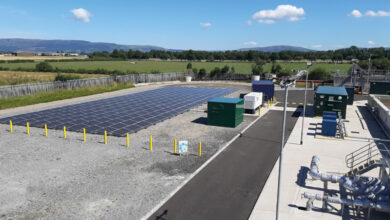Extra £51 million per year needed for ‘safe and sustainable’ roads

A report by the Comptroller and Auditor General Kieran Donnelly has found that an extra £51 million in funding per year is necessary in order to keep Northern Ireland’s road network in a “steady and sustainable state”. The report also notes that the overall structural maintenance backlog facing the Department for Infrastructure (DfI) has now reached an estimated cost £1.2 billion.
The report, ‘Structural Maintenance of the Road Network’, was released in March 2019, and found that an estimated £143 million is currently needed annually in order to maintain the road network to a satisfactory standard, but that maintenance spending has averaged at £92 million over the last five years.
It was also contended within the report that the operational efficiencies secured over the last 20 years are now being put in jeopardy due to financial pressures. These pressures are, in part, attributed to uncertainty at the beginning of each financial year, when opening budgets for the DfI have “varied considerably” and made the Department more and more reliant on in-year funding, which has reduced the ability to “plan this work properly and carry more of it out in periods of better weather”. The “resulting uncertainty over workloads” is said to have also had a negative impact on the Department’s associated private contractors. Time and financial pressures then lead to “less economic and sub-standard temporary repairs, until more money becomes available”.
Northern Ireland’s road network has now entered a circular process of funding being spent on reactive maintenance rather than improvement of the road network, meaning that money being unavailable for improvement leads to yet more degradation of the network and thus more money being spent on reactive maintenance. Lower priority defects in the road network are no longer even recorded or repaired, meaning that the damage worsens, which incurs higher costs when the issues are eventually addressed. With no published strategy for the maintenance of the road network or how to address the ever-growing maintenance backlog, it is unclear how or when these issues will be addressed other than by the current piecemeal model.
With 78 per cent of Northern Ireland’s road network being rural roads, the Comptroller and Auditor General found that “whilst the condition of roads making up the trunk road network [key transport corridors between major urban areas which amount to 1,236 kilometres of road] is still relatively good, the other roads making up the local road network continue to deteriorate at a faster rate, as less money is made available to maintain them to the same standard”. This degradation has caused the £1.2 billion maintenance backlog currently facing the Department, a vast increase on a backlog of £168 million, in 2019 terms, in 1998.
The report consistently touches on the lack of any strategic planning published by the Department, and also states that the backlog that has now accumulated will only inhibit whatever strategic planning is being undertaken: “Uncertainty over funding levels also inhibits strategic planning and the development of more effective commercial relationships with private contractors. Publishing a structural maintenance strategy along with regular performance information and road condition data, would help the public and key stakeholders better understand the network’s condition and support the Department in maintaining it to a satisfactory condition.”
It ends its key findings section with a clear message to those in charge of budgeting for Northern Ireland: “However, without more funding certainty, it is unlikely that the Department will be able to deliver improved performance and value for money.”
It is reported that the prioritisation of the trunk road network – just 23 per cent of roads in Northern Ireland – has accelerated the deterioration of the rest of the roads. Between 2002 and 2009, 42 per cent of non-trunk “A” roads were found to be “approaching the end of their useful life”. Additional funding is said to have halted some of that slide, but it is still estimated that 35 per cent of these roads have a residual life of less than five years remaining. “A” roads are the only non-trunk roads to be assessed by their surface and underlying structure, with “B”, “C” and unclassified roads only assessed on their surface conditions. DfI told the Northern Ireland Audit Office that to fully examine these roads would be “neither practical nor financially viable”.
|
Recommendations |
|
The five recommendations made within the report are that the Department should:
|
It is contended within the report that long-term deterioration to the road network is a risk to public safety. It is said that “some road and pavement defects can, if undetected or not repaired promptly, increase the risk of damage to a vehicle or injury to people. This is particularly the case on roads with higher traffic volumes and speed limits, which increases the subsequent rate of deterioration and degradation.” The financial costs associated with accidents (compensation, legal costs, specialist costs, etc.) is said to have averaged out to £240,000 per year over the last five years.
When looking at accident statistics provided by the PSNI – accidents where no direct injury occurs are not collated – the Comptroller and Auditor General found that “the number of recorded collisions whose principal cause was attributed to a physical road condition is very small”, but that those collisions “increased year-on-year from four in 2013 to 15 in 2016, before decreasing to five in 2017”. While it is said to be “too early to determine whether the decrease in 2017 is a reversal of this recent trend”, it is warned that “the impact on the individuals and families involved in such collisions can be significant, as can the direct and indirect socio-economic costs of such collisions”.





